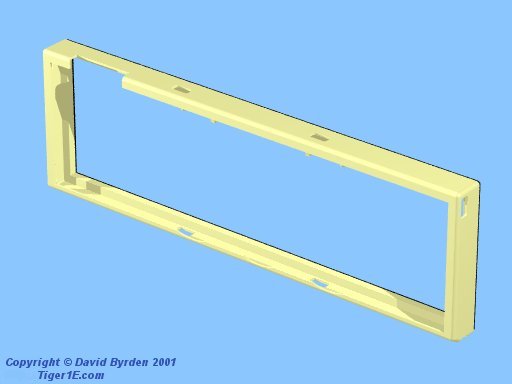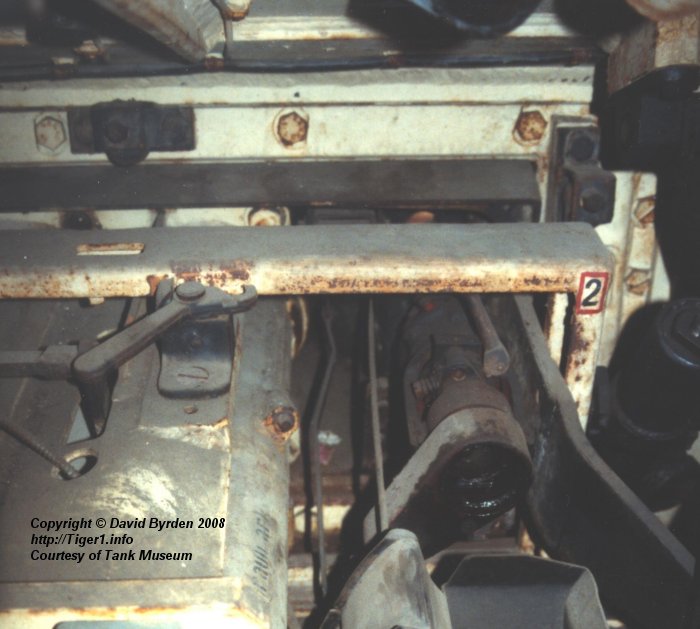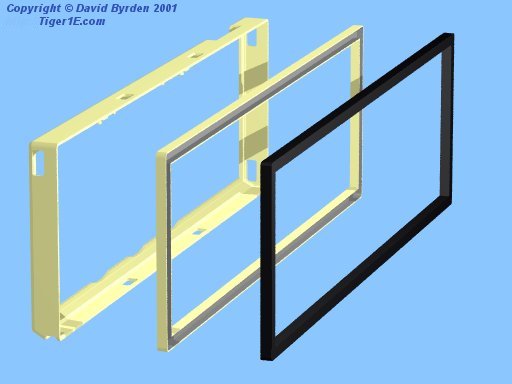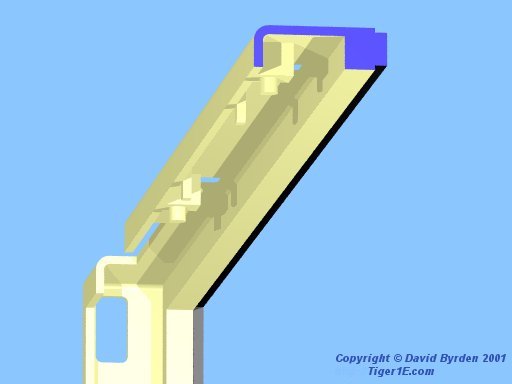About this detail of the Tiger

The Tiger could be completely sealed for deep wading. The joint between the mantlet and turret armour was sealed from inside the tank, by pressing rubber strips against it. The rubber strips were carried in a rectangular frame, shown in this model.

When not in use, the frame was locked to the gun cradle just behind the mantlet. This is the gun in the Bovington tank, before restoration. The frame carries the legend '2'. This is its number in the list of procedures for sealing the turret.
Two levers are fixed to the top of the gun cradle, and their purpose is to lock this frame in place for storage. We can see one of the levers to the left of the photo. To lock the frame in place one should turn these levers anticlockwise, so that the hooks grip two pegs on the frame.
A peg is visible in this photo, but it's not one of the locking pegs. It's a guide post to keep the frame seated between two guide rails on the gun cradle. You can see one of the guide rails immediately to the left of the locking lever.
Here is my diagram of the frame. It is an L-beam with cutouts for the telescope and the bottom of the gun cradle. The frame that I measured, in Bovington, had its telescope cutout 20mm to the left of where it ought to be. This may be a manufacturing error.

Strips of rubber, 22mm square, are embedded in a channel welded to the forward side of the L-beam.

In the top of the beam are the pegs for the locking handles, and the guide posts.
When underwater travel was required, the gun was locked into the horizontal position by use of hooks on the turret roof. The locking levers were turned clockwise to unhook the frame. It was pushed forwards to meet the rear edge of the mantlet. The armour around the mantlet did not provide a good base for the sealing strips, so a metal frame was bolted to it for this purpose.
[2] Survey of Tiger 250122, at Bovington museum, by David Byrden